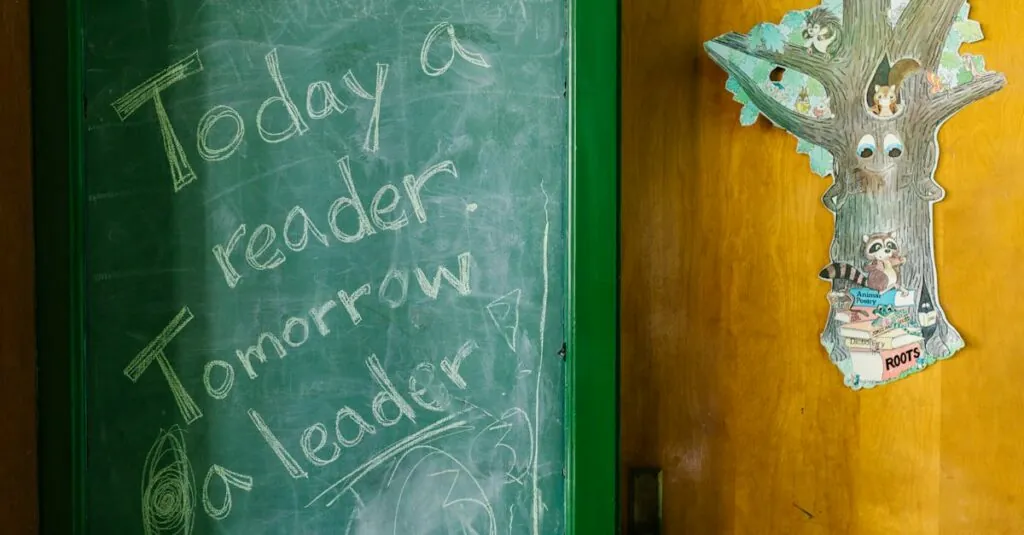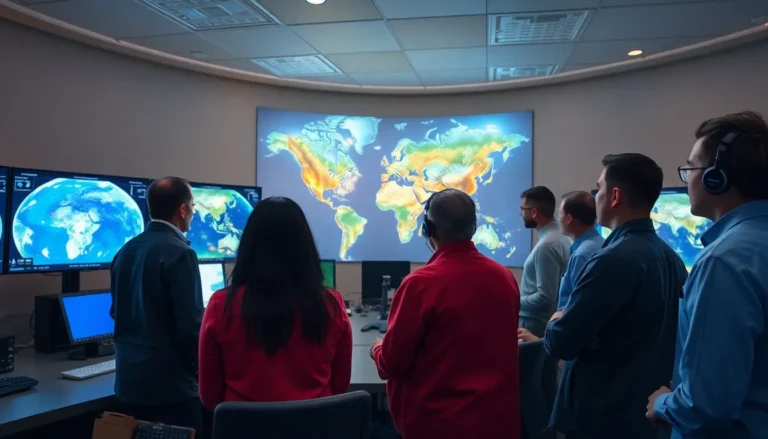Table of Contents
ToggleEducation today is like a rollercoaster ride—full of ups, downs, and unexpected twists that leave everyone dizzy. From overcrowded classrooms to outdated curricula, the challenges teachers and students face are enough to make anyone question their sanity. It’s a wild world out there, where standardized tests seem to take precedence over actual learning, and technology often feels like a double-edged sword.
But fear not! Amidst the chaos, there’s hope for a brighter future. By shining a light on these pressing issues, we can spark conversations that lead to meaningful change. So buckle up and get ready to explore the quirks and quagmires of modern education—because understanding the problems is the first step toward solving them.
Overview of Issues in Education Today
Education faces numerous challenges impacting students, educators, and institutions. Overcrowded classrooms hinder individual attention, making effective teaching difficult. Outdated curricula fail to engage students and may not reflect current knowledge or skills necessary for the workforce.
Standardized testing dominates assessment methods, often prioritizing rote memorization over critical thinking and creativity. Stress associated with these tests can negatively affect students’ mental health, reducing their overall learning experience.
Technology in education brings both advantages and complexities. While online resources enhance learning opportunities, not all students access reliable internet or devices, widening the educational gap. Additionally, reliance on technology can lead to reduced interpersonal skills and a lack of hands-on experiences.
Equity in education remains a pressing issue. Disparities based on socioeconomic status, race, and geographic location affect students’ opportunities. Urban and rural students often face significant differences in resources available to them, exacerbating existing inequalities.
Teacher retention and training also present challenges. Many educators leave the profession due to burnout or lack of support, and new teachers often lack sufficient training. Providing ongoing professional development could help educators adapt to evolving educational demands and foster a positive learning environment.
Addressing these issues requires collaboration among policymakers, educators, and communities. By raising awareness and fostering open dialogue, stakeholders can brainstorm effective strategies to create a more equitable and engaging educational experience for all students.
Key Challenges Faced by Students
Students today confront significant challenges that impact their educational experiences. Among these, mental health concerns and access to resources stand out as critical issues.
Mental Health Concerns
Mental health plays a vital role in a student’s ability to learn effectively. Anxiety, depression, and stress related to academic pressures frequently hinder student performance. Studies indicate that nearly 20% of students experience mental health issues, complicating their ability to focus and engage in the classroom. Many educators lack the training to recognize and support these needs, further escalating the problem. Specialized programs and resources readily available can help, but access remains inconsistent across schools. Overall, addressing mental health is essential for fostering a supportive educational environment.
Access to Resources
Access to educational resources significantly influences student success. Disparities exist between students in urban and rural settings, affecting their access to technology, books, and extracurricular activities. For instance, only 70% of students in low-income areas have reliable internet access, limiting their ability to engage in online learning opportunities. Schools with fewer resources often struggle to provide updated materials and qualified teachers. Equitable access to resources ensures that all students can benefit from the same learning experiences, which directly contributes to their overall achievement and well-being.
Teacher Shortages and Retention
Teacher shortages and retention issues significantly impact educational quality. An insufficient number of qualified educators leads to overcrowded classrooms, limiting personalized instruction. Moreover, high turnover rates place additional stress on remaining teachers, diminishing their effectiveness. Research shows that classrooms lacking stable leadership see a drop in student performance and engagement.
Impact on Student Learning
Lack of experienced teachers negatively influences student learning. Students often face inconsistent instruction when teachers leave the profession frequently. Consequently, skills development suffers, especially in critical subjects like math and science. Approximately 25% of new teachers leave the field within the first five years, creating gaps that hinder academic achievement. This instability disrupts not only curriculum continuity but also students’ emotional and social development.
Strategies for Improvement
Improving teacher retention requires strategic intervention. Offering competitive salaries can attract quality candidates. Investing in mentorship programs supports new teachers during their transition into the profession. Providing ongoing professional development opportunities fosters a positive work environment. Fostering collaboration among educators enhances camaraderie and support, reducing feelings of isolation. Schools that implement these strategies often see higher retention rates and, ultimately, better student outcomes.
Technology Integration in Education
Technology integration presents opportunities and challenges within the educational landscape. Effective use of tech tools can enhance student engagement and support personalized learning for diverse learners.
Benefits and Drawbacks
Access to digital resources can stimulate creativity and collaboration among students. Students often develop important skills such as problem-solving and critical thinking through interactive platforms. However, technology reliance may lead to distractions and a decrease in face-to-face interactions. Teachers may also feel overwhelmed with navigating the vast range of available tools. Ensuring successful integration means balancing tech use with traditional teaching methods to maintain a comprehensive educational experience.
The Digital Divide
Disparities in access to technology continue to plague education. Approximately 70 percent of students in low-income areas lack reliable internet access, limiting engagement in online resources. Students in rural areas face unique challenges, often struggling with both device availability and connectivity issues. This digital divide exacerbates educational inequality, creating significant barriers for many learners. Addressing these gaps requires targeted investments in infrastructure and resources, ensuring all students can benefit from technological advancements.
Curriculum Relevance and Adaptability
Curriculum relevance stands at the forefront of educational challenges today. It adapts slowly to the needs of students, often leaving them unprepared for real-world complexities. Needed skills like critical thinking and collaboration frequently take a backseat to rote memorization. Educators emphasize the importance of integrating contemporary topics such as technology and social issues into the curriculum.
Integration of emerging fields creates a dynamic learning environment. Students benefit from courses that address current events and career pathways, bridging the gap between education and employment. Classroom discussions should include recent advancements like artificial intelligence and environmental sustainability, allowing students to engage with pressing issues.
Adapting curricula also means recognizing diverse learning styles. Personalized learning paths accommodate students with different strengths and weaknesses, enhancing engagement and retention. Teachers play a crucial role in this adaptation, yet many lack professional development opportunities focused on innovative instructional strategies.
Standardized testing often dictates curriculum structure, limiting educators’ flexibility. Tests prioritize memorization over creative problem-solving, hindering deeper understanding. Voices advocating for curriculum reform stress the need for assessments that measure true learning progress rather than mere recall.
Implementation of project-based learning encourages exploration and teamwork. Engaging projects allow students to apply knowledge in practical situations, fostering essential skills. Schools that embrace adaptability in their curricula can better prepare learners for future challenges.
Lastly, continuous evaluation of educational resources and methods remains vital. Schools must assess the effectiveness of lesson plans and teaching approaches regularly. Reinforcing a cycle of feedback and improvement ensures curricula stay relevant and meet students’ evolving needs.
The landscape of education today is marked by significant challenges that demand urgent attention. Overcrowded classrooms outdated curricula and the overemphasis on standardized testing hinder genuine learning experiences. Mental health issues and disparities in access to resources further complicate the situation for many students.
Equity remains a critical concern as socioeconomic factors influence educational opportunities. The need for effective teacher training and support is essential to retain dedicated educators who can foster a positive learning environment.
By prioritizing collaboration among stakeholders and investing in innovative solutions education can evolve to meet the diverse needs of all students. Embracing change is vital for creating an equitable and engaging educational experience that prepares students for the complexities of the modern world.




